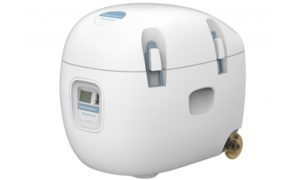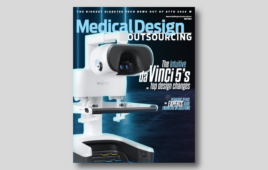
Lisa Anderson, president, co-founder and COO of Paragonix Technologies
Organ transplants are performed annually to remove diseased organs and replace them with healthy ones to extend the lifespan of patients. Potential transplant recipients are placed on a waiting list by a doctor who has determined that a transplant is the best course of action. Once a donor organ is available, the organ transportation system becomes one of the most critical medical devices of the transplantation process, according to Lisa Anderson, president, co-founder and COO of Paragonix Technologies.
Before Anderson helped found Braintree, Mass.–based Paragonix Technologies, she was working in the lab at Harvard Medical School and discovered that two important things were missing in the way organs were being transported: preservation and respect.
“I was at Harvard Medical School doing research in Type 1 diabetes and one of the aspects of my research was to dissect the human pancreas. This was a revelation to me that when I first saw the human pancreas coming into the lab, I called my colleague and I said, ‘Oh my god, they messed up the packaging here. I can’t believe that organs are transported like that. Is this just for research?'” Anderson told Medical Design & Outsourcing in an interview. “I was really upset about it. I still remember it. We called the lab and the clinical staff and they said, ‘No, this is how organs are transported – even for transplantation.'”
Anderson’s memory of the experience followed her from her research years and into her career at a venture capital firm where she was sourcing a variety of medical technologies. Anderson discovered a number of concepts that address organ storage —and technology meanto to improve the transport from donor to recipient.
“When I saw the various technologies out there, it was a very natural move for me to say that I’m going to drop everything else,” Anderson said. “If this is an area where I can make an impact, this is where I want to be. That’s how Paragonix was founded back in 2010.”

SherpaLung [Image courtesy of Paragonix Technology]
“It was only within two years of the company founding that I had finally brought in the right expertise to direct me into what is now our current fields, the cardiac field and the lung field. Direction was important,” said Anderson.
There are over 113,000 people on the national transplant waiting list in the U.S., according to the U.S. Department of Health and Human Services. Last year, there were 36,528 transplants, with 3,408 being heart, 2,530 being lung and 21,167 being kidney transplants.
Each organ can only survive for a certain amount of time once it’s outside of the body. Hearts and lungs can survive 4–6 hours and kidneys can survive 24–36 hours. So, regulating the environment between the donor and the recipient needs to be managed precisely.
“We perfectly control the temperature of that organ. The perfect organ preservation temperature is between 4 and 8 °C. In combination with preservation solutions that are being used in combination with our device, we maintain the organ in stasis. We ensure that the organs aren’t damaged during transport,” said Anderson.
Paragonix Technologies’s SherpaPak Cardiac Transport System is a lot different from using the plastic bag and ice cooler method, says Anderson. A cooler with crushed ice offers no temperature control and the longer the transport time is, the worse the temperature control gets. There is also no record of how the organ was transported.
“With our product the SherpaPak Cardiac Transport System, we provide that optimal control for the organ. We provide a record of the temperature during transport and that record can be downloaded via Bluetooth after the transport and then filed with the patient’s clinical file,” said Anderson. “We are all about filling that gap between donor and recipient.”
Paragonix Technologies last year landed support from the Lung Transplant Foundation to continue developing and commercializing its SherpaLung lung transporting system.
Each organ transporting system is single-use and made from three components: a shipper to provide an insulating layer to the organ; sterile, two clear polycarbonate sterile canisters that are leak proof to ensure no liquid is coming in or out of the device and the Sherpa cool material that helps ensure temperatures are kept at 4 °C.
“We had a recent transport performed with SherpaPak in Europe where we had a total out of body time of 7 hours. The surgeon called me in the middle of night to tell me, ‘You know Lisa? I wanted to tell you something. We would not have implanted that heart if it hadn’t been transported in your product,'” said Anderson. “My only goal when I started Paragonix was to bring something important to patient care. That was my absolute desire, my dream. I really wanted to develop a product that could benefit patients. And I think, the past eight months since the launch of our first product have been some of the most satisfying months of my life. People are alive because of our product. People received a heart because of our product.”
Moving forward, Anderson says the company will be continuing its research and development efforts into making devices for other organs while expanding its commercial footprint. Paragonix Technologies also recently received FDA clearance to use its SherpaPak CTS to transport pediatric hearts, an underserved market.
“We just recently obtained FDA clearance for the use of [SherpaPak CTS] for the transport of pediatric hearts. This is something incredibly important for the company, and we were excited to see the first use of the product for pediatric heart transplantation,” said Anderson.






